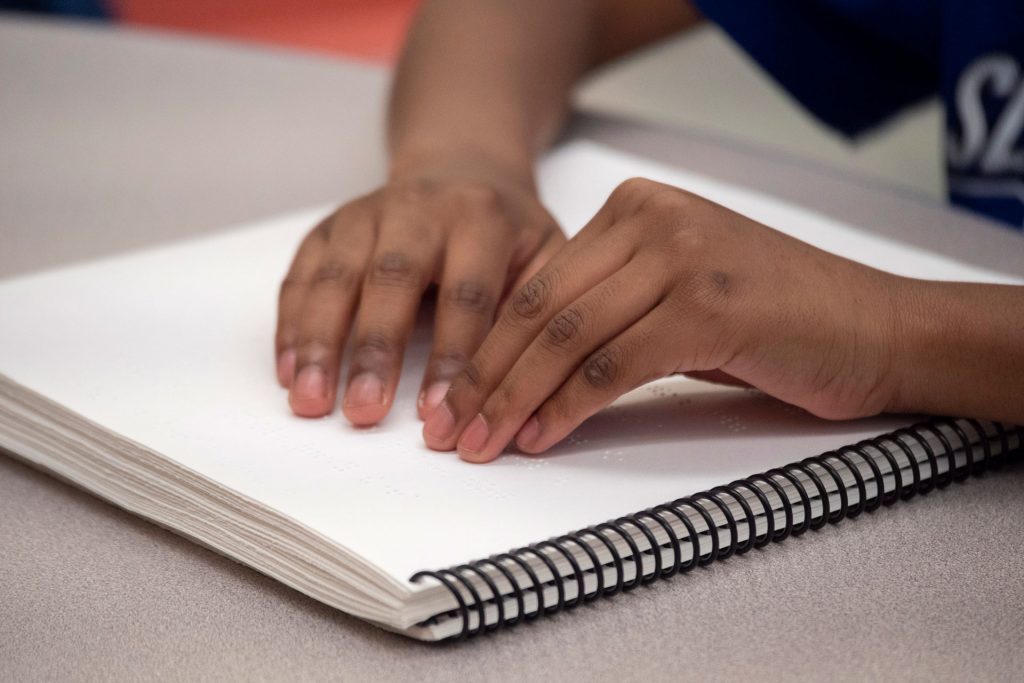NOTE: October is National Blindness Awareness Month
In recognition of Blindness Awareness Month the National Instructional Materials Access Center (NIMAC) is pleased to share experiences of students with visual impairments and their parents and teachers, highlighting how we are expanding access to reading and learning for students across the United States.
Recently, we spoke with a team of braillists and teachers of students with visual impairments (TVIs) in Hillsborough, Florida. These professionals know braille is a powerful tool that allows students to actively engage and take ownership in their learning experiences. As one TVI describes, “if you’re always just listening instead of actively seeking your own information, that’s not active learning. If you’re saying, ‘let me use the glossary, and table of contents’ that’s active learning.”
Having access to materials in braille also facilitates student independence. A Florida student, now in college, describes the experience of receiving braille materials in school, explaining, “I didn’t have to have anybody read anything to me, which is awesome…[braille] helped me in a lot of ways as far as me being able to learn independently and grasp concepts.” Conversely, not having materials at the same time as sighted peers puts braille readers at a disadvantage, as another student relates: “It’s a stressful thing if you don’t have what you need to do your homework. You basically can’t do the assignment and you have to tell the teacher. It’s so demeaning. That doesn’t feel good.”
For students who read braille, the NIMAC supports the efficient production and delivery of braille textbooks and related core materials. The expanding number of files available in the NIMAC (now over 67,000!) means that states can hit the ground running when there is a need to produce braille and other accessible formats. Additionally, now that the NIMAC can accept files for digital instructional materials, we can further level the playing field for braille readers, especially for younger students who may not yet have the keyboard navigation skills for interacting with an online curriculum.
While advances in technology like refreshable electronic braille displays allow many students to access content digitally, embossed braille is still essential for education, and TVIs don’t expect braille books to disappear any time soon. Books for subjects like math and science require students to explore an entire page (or more) of material at once, rather than the single line of text available on a refreshable braille display. Says one TVI, “I’d never give the math book on a device…. For me an actual textbook, braille printed on paper, is the only way to go.”
Also, check out the other two blog posts in this series, What’s New at the National Instructional Materials Access Center and Ella.
Student, teacher, and parent quotes and experiences excerpted from: Perkinson, L., Mueller, P., Russell, A., & Schroeder, K. (2020). NIMAC/NIMAS Impact Report. Evergreen Evaluation & Consulting, Inc.
Blog articles provide insights on the activities of schools, programs, grantees, and other education stakeholders to promote continuing discussion of educational innovation and reform. Articles do not endorse any educational product, service, curriculum or pedagogy.

